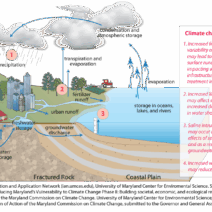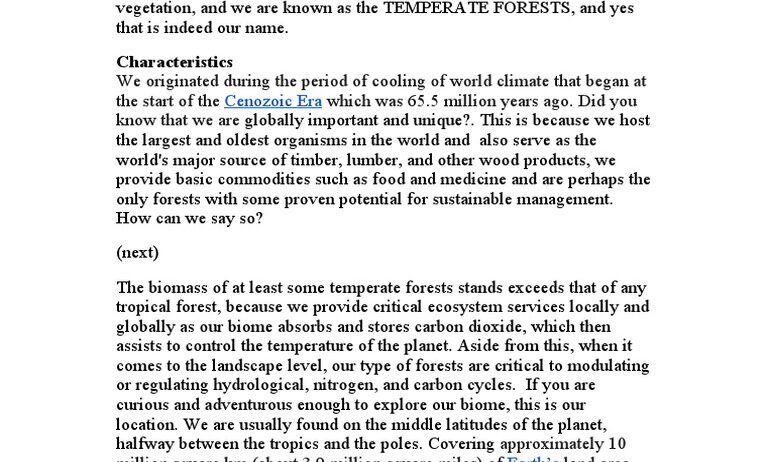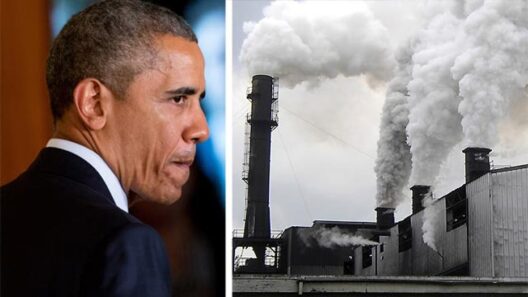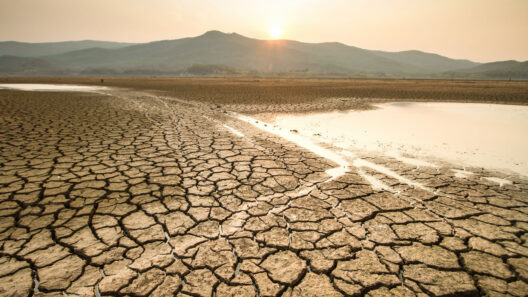The climate of the temperate forest is a remarkable tapestry of seasonal transitions, characterized by a distinctive amalgamation of temperature, precipitation, and a vibrant biodiversity. This ecological zone, primarily situated between the tropics and polar regions, frequents multiple continents including North America, Europe, and parts of Asia. The climate lends itself to the flourishing of an enchanting assortment of flora and fauna, and serves as a critical buffer against climate change. Understanding the climate of temperate forests unveils intricate, interconnected systems teeming with life, offering profound insight into the mechanisms of our planet.
***A Multifaceted Climate***
Temperate forests thrive under a climate that is neither excessively hot nor unbearably cold, exhibiting distinct seasonal changes. These regions often experience four definitive seasons: spring, summer, autumn, and winter. Each season brings unique meteorological phenomena that play a pivotal role in the ecosystem’s health and maintenance. The summer months cradle warm temperatures, oscillating between 70°F to 85°F, fostering growth and photosynthesis. This is when the forest bursts into life, cloaking the landscape with emerald canopies and vibrant blooms.
As the vernal equinox yields to the heat of summer, moisture levels are also a crucial factor. Temperate forests generally receive between 30 to 60 inches of precipitation annually, distributed fairly evenly throughout the year. The ample rainfall, particularly in late spring and summer, is vital for nurturing the verdant flora that characterizes these woodlands. However, this liquid gold must be balanced; droughts can threaten the delicate equilibrium of the forest. Climate change exacerbates this vulnerability, leading to extreme weather patterns that can inundate or desiccate these ecosystems.
When autumn arrives, temperatures begin to dip, invoking a striking transformation. Deciduous trees shed their leaves in a flamboyant display of reds, oranges, and yellows, a process known as abscission. This seasonal transition is not merely aesthetic; it is a survival strategy. As temperatures plummet and daylight wanes, leaf drop conserves resources, preparing the tree to endure the upcoming winter’s chill. The average winter temperature in these regions can dip as low as 20°F, compelling the forest to enter a state of dormancy where growth ceases, and energy conservation becomes paramount.
In winter’s grasp, the temperate forest adopts a barren guise, yet life continues in myriad forms. The undergrowth may lie dormant, but various species adapt to the cold. Some animals, like deer and certain birds, find refuge in the shelter of evergreen trees, while others hibernate underground. The interplay of snow cover serves as an insulating layer for the ground, preventing the soil from freezing solid and protecting the roots of plants that lie in wait for spring’s return.
***The Role of Temperature and Precipitation***
The interplay between temperature and moisture is quintessential in temperate forests, nurturing complex ecosystems. Trees such as oaks, maples, and beeches dominate these landscapes, each species playing a specific role in the forest’s health. Their extensive root networks stabilize the soil and prevent erosion, while their lush canopies provide habitat for countless organisms, from fungi to large mammals. The deciduous trees transition through the seasons, creating layers of biodiversity that promote resilience against climate fluctuation.
Temperature is a crucial determinant of species distribution within these forests. Sensitive to thermal variations, organisms have adapted to their specific microclimates. The juxtaposition of cooler northern slopes with the warmer southern aspects creates diverse habitats for myriad species. As certain tree species migrate poleward in response to warming temperatures, this shift indicates a broader change in ecological balances and interconnectivity.
In particular, precipitation patterns dictate not just the presence of species but also the timing of their life cycles. Rain-fed streams and rivers pulse through temperate forests, creating riparian habitats that teem with diverse aquatic life. This interconnectedness echoes the sheer magnitude of these ecosystems: every raindrop contributes to the health of the forest, supporting not just trees but entire communities of life.
***Impacts of Climate Change***
Yet, the climate of the temperate forest is not immune to pressures wrought by human activities. Climate change is manifesting in unpredictable ways, challenging the delicate balance of these ecosystems. Increased temperatures and altered precipitation patterns lead to water stress for many tree species, while invasive species encroach, further complicating the habitat’s stability. These forests stand at a precipice; they may either adapt or degrade under escalating climatic pressures.
Moreover, the frequency and intensity of disturbances, such as wildfires and storms, have surged in recent years. The aftermath of such events can be devastating, resulting in the loss of biodiversity and the displacement of wildlife. A deeper understanding of how temperate forests respond to these changes unveils new avenues for conservation strategies, underscoring the importance of sustainability and proactive engagement with preservation efforts.
***A Vital Connection to Human Existence***
Our understanding of the temperate forest climate not only reveals the intricacies of nature but also emphasizes the important connection between these ecosystems and human survival. These forests provide invaluable ecosystem services, including clean air, fresh water, and carbon storage. As humanity grapples with the consequences of climate change, temperate forests emerge as vital players in the global fight against environmental degradation.
Reframing our perspective of these environments encourages an appreciation for their complexity and our responsibility for their stewardship. The temperate forest beckons us to engage in their preservation and celebrates the hidden intricacies of life interconnected through climate. Promoting sustainable practices and connectivity between ecosystems is essential. Our future hinges upon understanding and valuing these green bastions, the sustaining players in a larger ecological narrative.
In conclusion, the climate of temperate forests tells a story not merely of seasons but of resilience, adaptation, and interdependence. As we explore this narrative, we uncover our role as stewards of the planet. Accepting this responsibility may ensure that the rich legacy of temperate forests continues to thrive, inspiring curiosity, advocacy, and collective action for generations to come.






